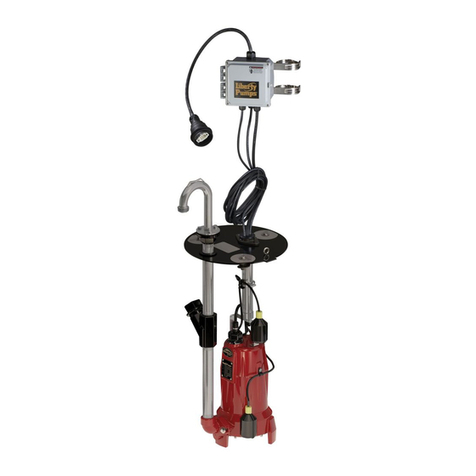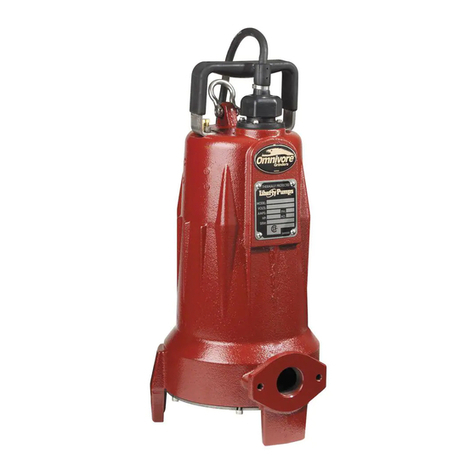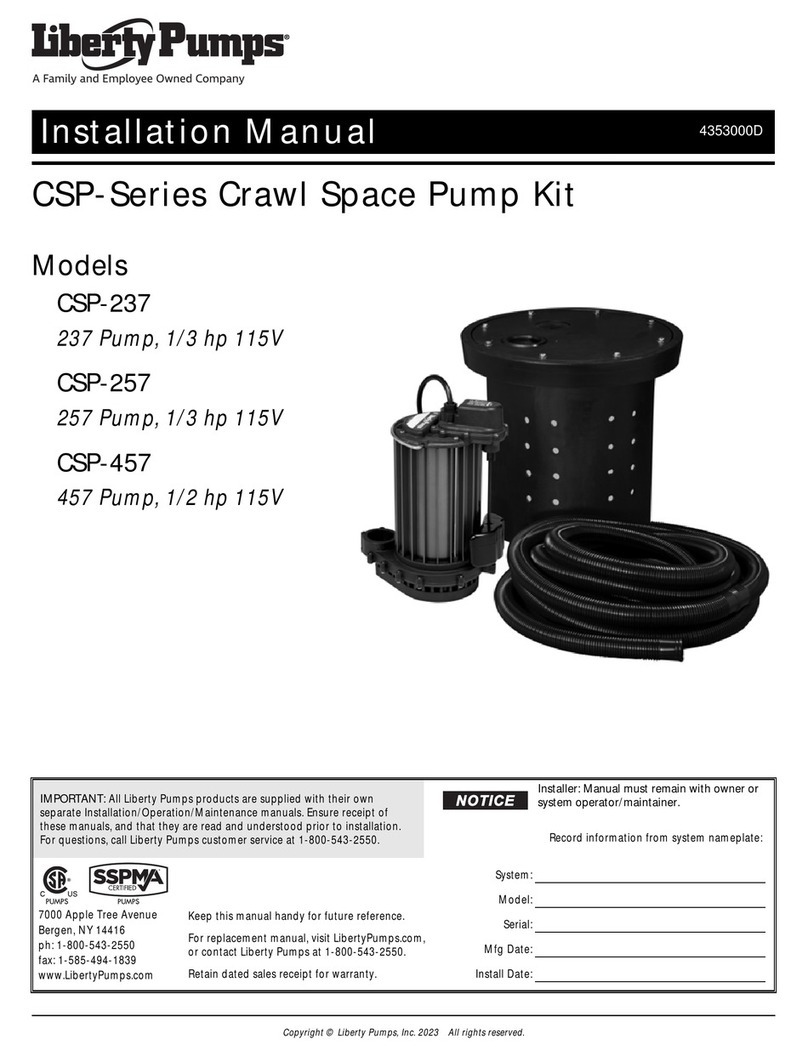
7108000K Copyright © Liberty Pumps, Inc. 2023
All rights reserved. 3 | EN
For cord replacement: power cord must be of the same length
and type as originally installed on the Liberty Pumps product.
Use of incorrect cord may lead to exceeding the electrical
rating of the cord and could result in death, serious injury, or
other significant failure.
These pumps are not to be installed in locations classified as
hazardous in accordance with the National Electric Code®,
ANSI/NFPA 70.
Do not use this product with or near flammable or explosive
fluids such as gasoline, fuel oil, kerosene, etc. If rotating
elements inside pump strike any foreign object, sparks may
occur. Sparks could ignite flammable liquids.
Sewage and effluent systems produce and may contain
flammable and explosive gases. Prevent introduction of
foreign objects into basin as sparks could ignite these gases.
Exercise caution using tools and do not use electronic devices
or have live, exposed electrical circuits in or around basins,
open covers and vents.
Do not modify the pump/pump system in any way.
Modifications may affect seals, change the electrical loading
of the pump, or damage the pump and its components.
All pump/pump system installations shall be in compliance
with all applicable Federal, State, and Local codes and
ordinances.
Do not allow children to play with the pump system.
Do not allow any person who is unqualified to have contact
with this pump system. Any person who is unaware of the
dangers of this pump system, or has not read this manual, can
easily be injured by the pump system.
Vent basin in accordance with local code. Proper venting of
sewer and effluent gases alleviates poisonous gas buildup
and reduces the risk of explosion and fire from these
flammable gases.
Wear adequate Personal Protective Equipment when working
on pumps or piping that have been exposed to wastewater.
Sump and sewage pumps often handle materials that can
transmit illness or disease upon contact with skin and other
tissues.
Energizing the control panel or breaker for the first time is
potentially dangerous. Licensed electrical personnel should
be present when the panel or breaker is energized for the first
time. If faults caused by damage or poor installation practices
have not been detected, serious damage, injury or death can
result when power is applied.
Do not remove any tags or labels from the pump or its cord.
Keep clear of suction and discharge openings. To prevent
injury, never insert fingers into pump while it is connected to
a power source.
Do not use this product with flammable, explosive, or
corrosive fluids. Do not use in a flammable and/or explosive
atmosphere as serious injury or death could result.
This product contains chemicals known to the State of
California to cause cancer and birth defects or other
reproductive harm. www.p65warnings.ca.gov.
This pump has been evaluated for use with water only.
Do not position the pump float directly under the inlet from
drain tile or in the direct path of any incoming water.
Do not use pumps with fluid over 140°F (60°C). Operating the
pump in fluid above this temperature can overheat the pump,
resulting in pump failure.
Do not dispose of materials such as paint thinner or other
chemicals down drains. Doing so could chemically attack and
damage pump system components and cause product
malfunction or failure.
Keep pump upright.
Do not use pump system with mud, sand, cement,
hydrocarbons, grease, or chemicals. Pump and system
components can be damaged from these items causing
product malfunction or failure. Additionally, flooding can
occur if these items jam the impeller or piping.
Do not introduce any consumer item that is not toilet paper
into a non-grinder (dewatering, effluent, sewage) pump/
pump system. This includes, but is not limited to the
following:feminineproducts, wipes, towels, towelettes, dental
floss, swabs, pads, etc. Items such as these put the pump
under undo strain and can result in pump/pump system
failure. Additionally, it creates conditions for discharge line
blockage.
Submersible Pump—do not run dry.
Do not allow pump to freeze.
At no time shall the pump be stored within an incomplete wet
pit. The pump shall not be placed into the pit until it can be
fully operational.
RISK OF SERIOUS INJURY OR DEATH
General Information
Before installation, read these instructions carefully. Each
Liberty Pumps product is individually factory tested to
ensure proper performance. Closely following these
instructions will eliminate potential operating problems,
assuring years of trouble-free service.
These pumps are to be used for drain (storm) water.
Pumps are certified to CSA® and UL® standards.
Provide pump serial number in all correspondence.
Pumps must be serviced at a qualified repair facility
approved by Liberty Pumps. No repair work should be
carried out during the warranty period without prior factory
approval. Any unauthorized field repairs void warranty.
Contact Liberty Pumps at 1-800-543-2550 to locate the
closest authorized service center.

















































